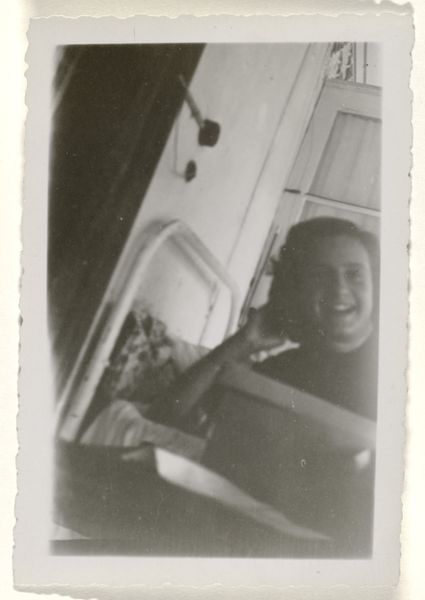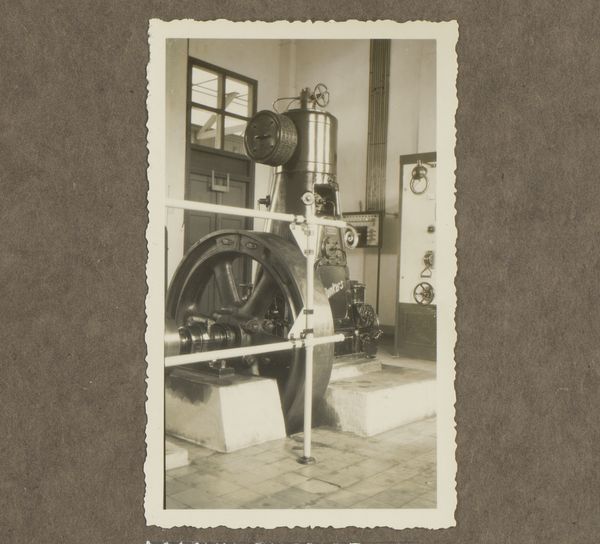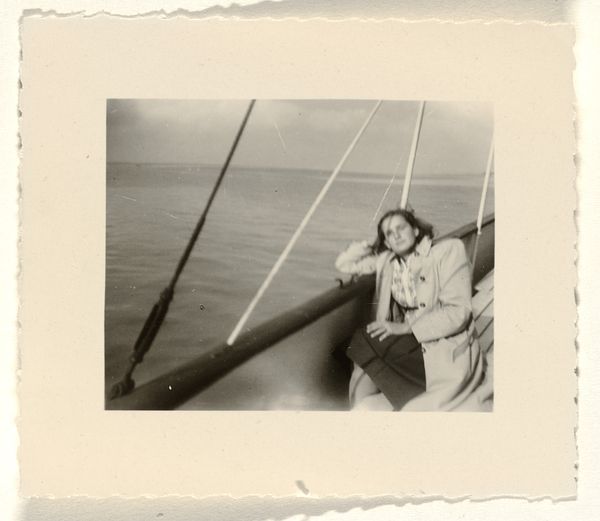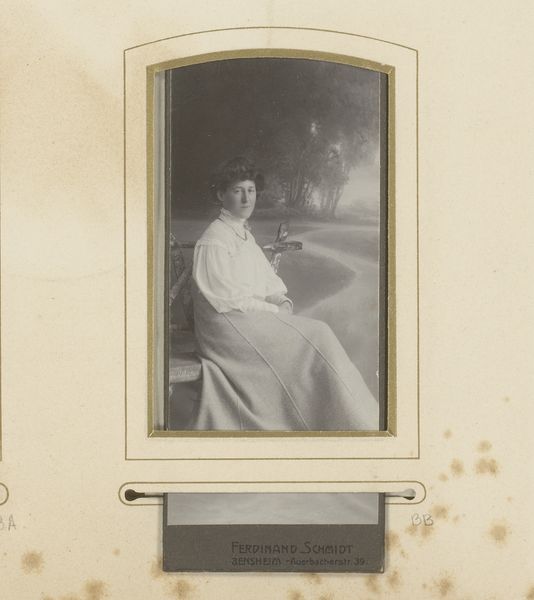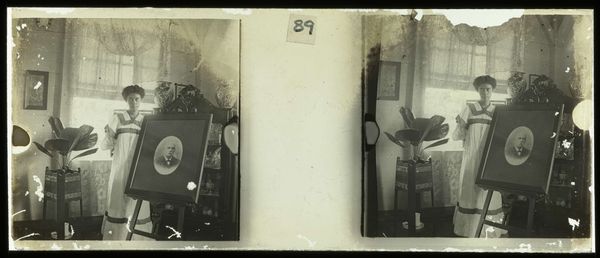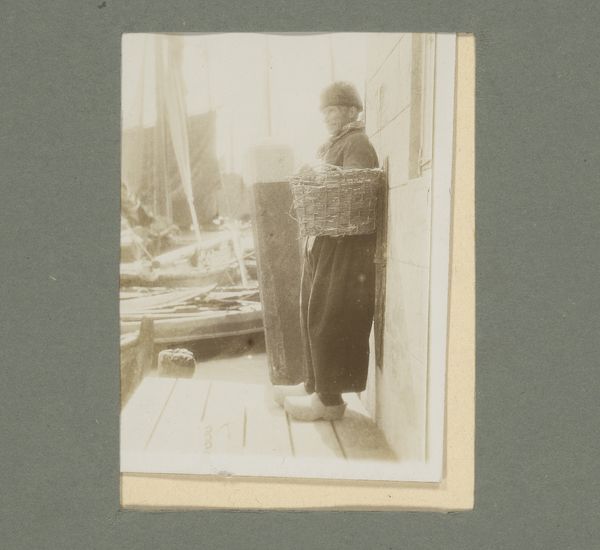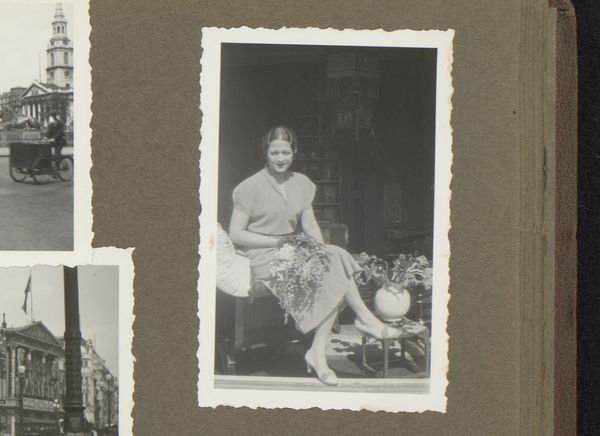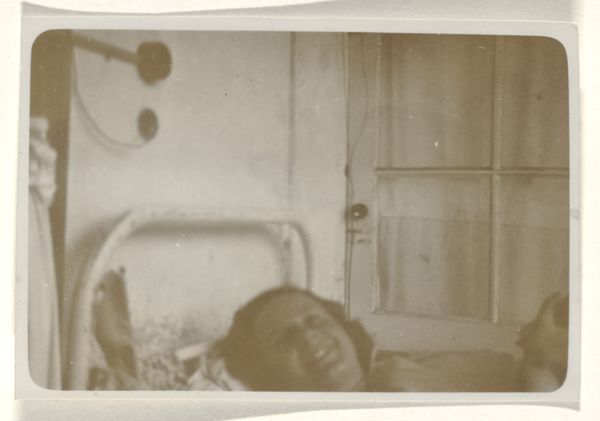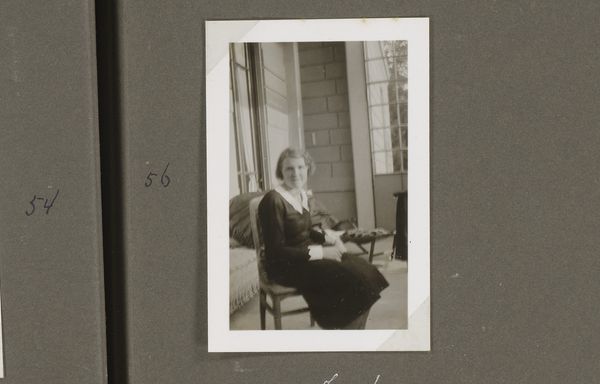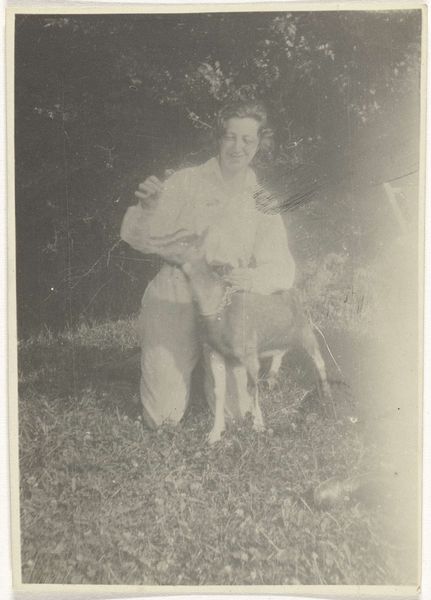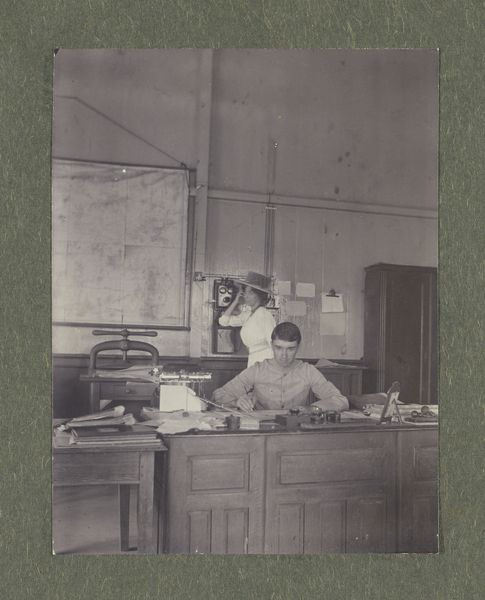
Isabel Wachenheimer liggend in een ziekenhuisbed in het sanatorium Etania in Davos, met een onbekende man naast haar bed, 12 augustus 1945 Possibly 1945 - 1948
0:00
0:00
photography, gelatin-silver-print
#
print photography
#
archive photography
#
photography
#
historical photography
#
gelatin-silver-print
#
genre-painting
Dimensions: height 50 mm, width 75 mm
Copyright: Rijks Museum: Open Domain
Curator: This gelatin-silver print, dating from the mid-1940s, captures a poignant scene at the Etania sanatorium in Davos. The subject is Isabel Wachenheimer in a hospital bed. Editor: It's a stark, intimate photograph. The contrast in tones seems almost bleached out, reflecting, perhaps, the sterile environment and the emotional weight of the situation. There's a visible grain to the photographic paper too. Curator: Precisely. And that grain is key to understanding its value as a piece of material culture. Gelatin-silver prints were the workhorse of documentary photography then; its reproducibility and relative affordability shaped visual narratives for the masses. Editor: My attention keeps being drawn to the man. His somewhat detached gaze and posture almost feels performative, like he is posing with the sick. Curator: That gets at the crux of its complexity. His hand resting on what looks like the bed frame offers some touch. This type of curated snapshot of loved ones suffering reminds us of the material culture and production behind creating family portraits to remember someone. The cost for medical treatment. And then how materials like this silver print and its accessibility shaped social visual narratives of the time. Editor: Beyond the immediate family, though, tuberculosis as an artistic subject comes up as a symbol in works like *La Traviata*. The invalid became an iconic figure in its own way—romantic, tragic, removed. And so it is possible the person viewing the picture can almost separate the individual from larger cultural anxieties around the disease that resonate on their own Curator: I think it's also worth mentioning Davos itself. As a location synonymous with both luxury and recuperation for the elite. These spaces provided opportunity for industry, for jobs. To look at these locations, means considering them more holistically and how different strata used, commodified, and worked at these destinations. Editor: I see what you mean; understanding these additional conditions help bring attention to multiple aspects of a piece and its subject that might have gone ignored. Curator: Exactly. By combining our understanding of the social landscape through careful examination, we allow space to contemplate both social narrative and lived experience through visual history. Editor: A collaboration offering powerful historical reflection then.
Comments
No comments
Be the first to comment and join the conversation on the ultimate creative platform.
